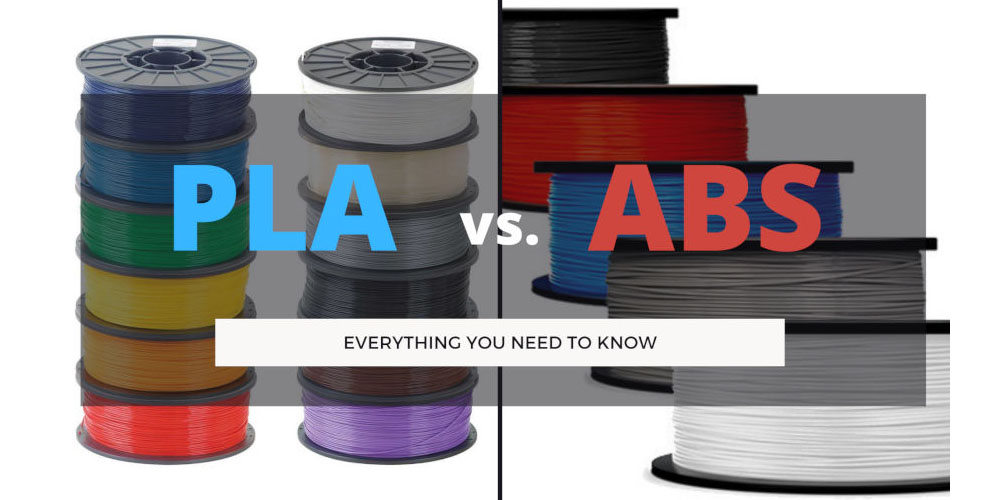JRMarker is one of the leading 3D printers, accessories, and filament manufacturers in the market. View page to check out some of their best 3D printing filaments, including their best-selling ABS and PLA filaments. ABS and PLA filaments are the most popular options in the market. For this reason, the two are often compared. Below is a comprehensive comparison of these two types of 3D printing filaments;
ABS 3D printing filament
ABS, known in full as Acrylonitrile Butadiene Styrene, is one of the go-to filament choices for 3D printing beginners. Therefore, it is one of the most popular 3D printer filament options on the market. Its popularity can be attributed to its incredible qualities. Some of these qualities include the fact that ABS is very strong and flexible. This makes a good material for various types of 3D printing. It is also easy to extrude, making it easy to operate. It comes in a wide range of sizes and weights. ABS filaments can withstand temperatures ranging between 210 degrees to 250 degrees Celsius. It makes an excellent option for additive manufacturing of automotive, moving parts, electronic housing, pipes, automotive components, electronic assemblies, and kitchen appliances.
Pros of ABS 3D printing filament
Below are the best features of this type of 3D filament;
- It is highly durable and resistant to abrasion
- It is lightweight
- It is slightly flexible
- It is the cheapest form of 3D filament on the market
- It is the most highly applied type of 3D printing material on the market.
The drawbacks of ABS 3D printing filament
This materials also features the following downsides;
- It is not biodegradable as it is petroleum-based
- It has a high melting point of between 210 to 250 degrees Celsius
- It emits toxic fumes when exposed to high temperature, which can be irritating
PLA 3D printing filament
Known in full as polylactic acid, PLA 3D printing filament is as popular as ABS. However, some people argue that it is a better alternative to the latter. PLA is a biodegradable plastic made from sustainable sources like potato starch, tapioca roots, and sugar cane. This makes it one of the most eco-friendly 3D printing filament options in existence. This is not only because of its biodegradability but also because of its low toxicity. PLA 3D printing filament is highly used for making food packaging, candy wrappers, disposable plates, garments, and hygiene products. It is also used in the medical market.
The advantages of PLA 3D printing filament
- It does not produce any toxic fumes
- It is one of the easiest materials to work with
- It is less prone to warping
- It is available in a wide range of colors
- It is a great alternative for beginners
- It is biodegradable and sustainable
The drawbacks of PLA 3D printing filament
- It is prone to clogging
- It is not as strong as the latter and is prone to becoming brittle
- It has a higher extrusion temperature
Conclusion
Both types of 3D printing filament are incredible. They both have their strengths and downsides. Therefore, there isn’t one that is more superior to the other. When choosing the best 3D printing filament between the two, it would help if you considered your needs and the type of product you want to manufacture.


